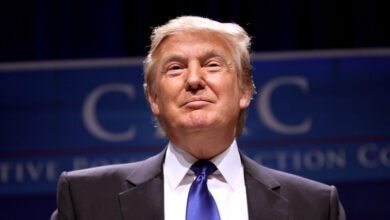
The race between blockchain networks to dominate stablecoin circulation is tightening once again, as Tron inches closer to overtaking Ethereum in the issuance of Tether (USDT), the world’s largest stablecoin.
According to blockchain analytics platform Arkham Intelligence, Tether minted an additional $1 billion worth of USDT on the Tron network on May 5.
This brings the total supply of USDT on Tron to $71.4 billion, based on figures from Tether’s transparency report. In comparison, Ethereum currently hosts around $72.8 billion in USDT — a lead of just $1.4 billion.
Tron previously held the top spot in USDT circulation from mid-2022 until late 2024. That changed after a significant minting event on Ethereum added $18 billion to its tally, temporarily restoring its lead. If current trends persist, Tron could once again surpass Ethereum as the primary network for USDT issuance.
Solana remains a distant third with $1.9 billion in USDT in circulation. Other networks like Ton, Avalanche, Aptos, Near, Celo, and Cosmos also support smaller volumes of the stablecoin.
The shift in network dynamics comes as Tether’s total circulation hits a record $149.4 billion — an 8.6% increase since the beginning of 2025. This expansion has further solidified Tether’s dominance in the stablecoin market, where it now commands a 61% share, according to data from CoinGecko. Its closest rival, Circle’s USDC, accounts for about 25% of the market with nearly $62 billion in circulation.
The surge in stablecoin supply also reflects broader trends in the digital asset space. Over the past six months, stablecoins have grown to represent 8% of the entire cryptocurrency market capitalization. A recent report from the U.S. Treasury Department projects that the stablecoin sector could reach $2 trillion by 2028, provided there is greater regulatory clarity.
In the United States, lawmakers are currently advancing two key legislative efforts aimed at establishing a clearer framework for stablecoin issuance. The GENIUS Act (Guiding and Establishing National Innovation for US Stablecoins) proposes definitions and reserve requirements for so-called “payment stablecoins.” A Senate vote on the bill is expected before May 26.
Another proposal, the STABLE Act (Stablecoin Transparency and Accountability for a Better Ledger Economy), is working its way through Congress. This legislation would establish oversight protocols for “federally qualified nonbank” stablecoin issuers.
Tether, which has largely operated outside the U.S. regulatory perimeter, is reportedly preparing to launch a U.S.-based stablecoin later this year — contingent on how these bills progress.
With network competition intensifying and regulatory clarity on the horizon, the stablecoin landscape may be on the brink of a major transformation. Tron’s potential return to the top of the USDT chart is just one piece of a rapidly evolving puzzle.




